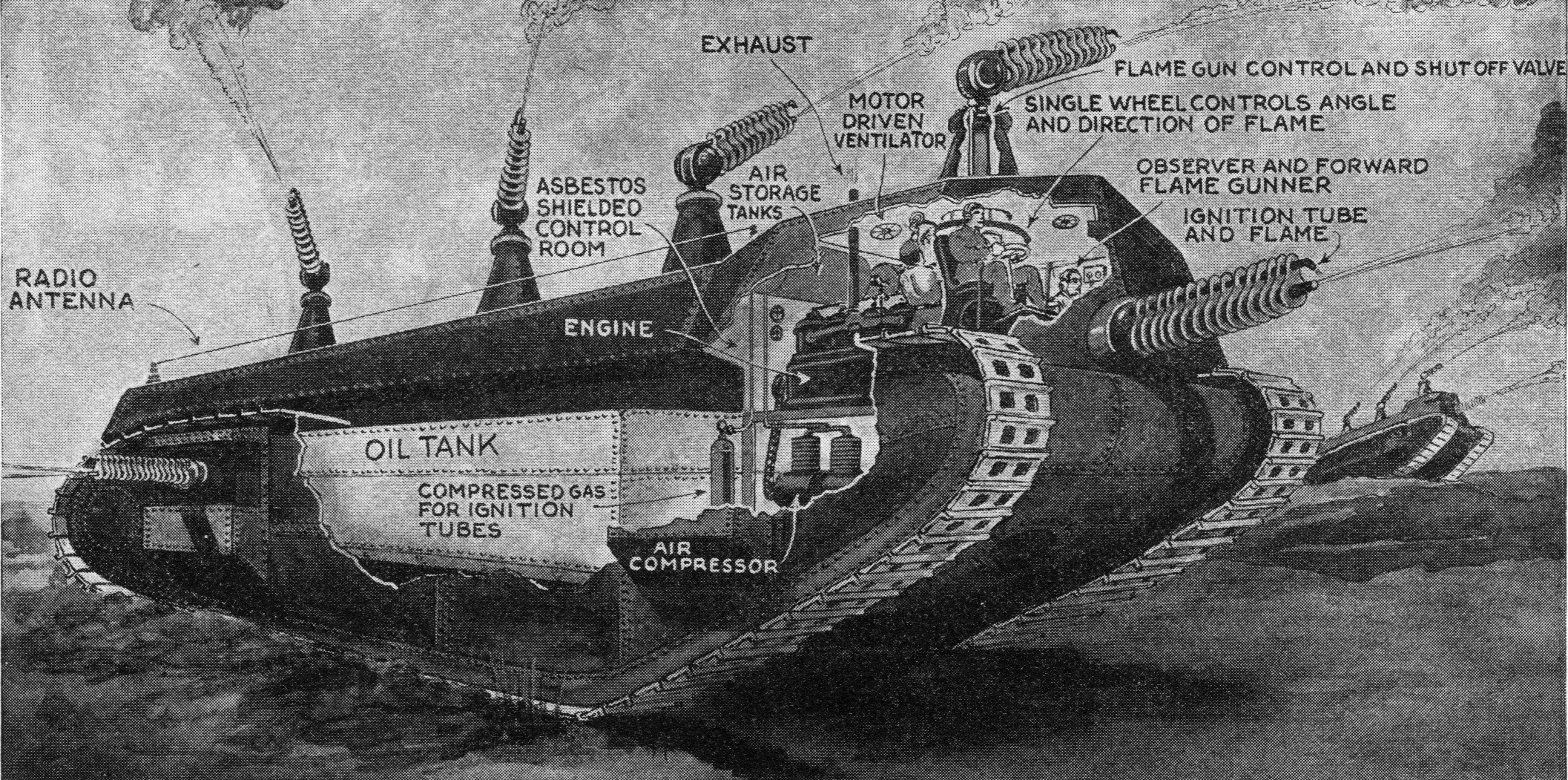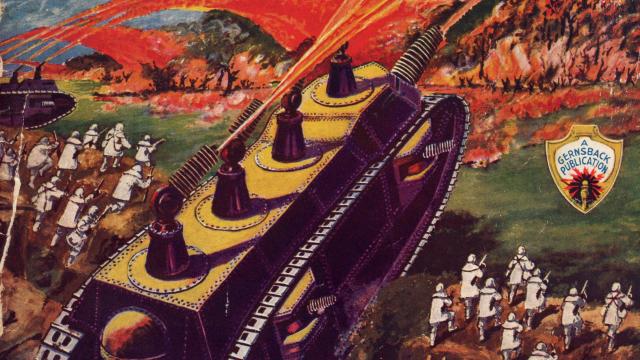In 1936, Hugo Gernsback proposed a terrifying new war machine meant to be more efficient than any that had come before it. He called it the “flame tank”. And while the thing looks absolutely horrifying in every way (those appear to be dozens of people being burned alive by the tank’s flame guns), the stated goal of Gernsback’s machine of death was actually to make war less brutal.
Science and Mechanics magazine featured Gernsback’s flame tank of the future on its January 1936 cover — at a time when World War II was just over the horizon.
Gernsback was operating under the surprisingly common assumption that if humans could make war too horrible to comprehend, then nations would simply no longer engage in it. Nikola Tesla had a similar rationale for a “death ray” that he was attempting to develop in the 1930s. As history shows us time and again, the road to war is paved with weapons that promise peace.

The concept of mutually assured destruction wouldn’t enter the popular psyche until the Cold War, when both the US and Soviet Union had nuclear weapons. But the idea of the flame tank — something so powerful and grotesque as to scare away entire armies before anyone fired a single shot — was meant as a deterrent of prolonged warfare.
As Gernsback explained in the accompanying article for Science and Mechanics, the threat of the weapon should be enough:
The flame tank, which I present herewith as a new idea in warfare, is not — as it would appear on first thinking — a frightful war implement to burn the enemy to a crisp. It is merely the threat of this new weapon which makes it important. The flame tank is the outgrowth of the German fiammenwerfers (flame-thrower) which were used in the World War. These flame-throwers were, usually, small portable reservoirs attached to the backs of the soldiers, and containing gasoline or other fuel; by providing pressure in the reservoir, and connecting a hose to it, a flame could be directed about 20 to 30 feet ahead of the soldier. It constituted an excellent threat and would make any soldier at whom it was directed turn tail unless, of course, his comrades shot down the men carrying the flame-throwers.
Gernsback even thought that the tank could find work during peacetime, cutting down paths through jungles or woodland areas:
The flame tank may also find peacetime uses, where roads have to be built through woods or jungles. A few such tanks, by burning down trees and vegetation, will probably be able to clear a path quickly and economically; other tanks following will throw not gasoline but water, under high pressure to keep the fire from spreading when and where it is not wanted. A path can thus be cut quicker through woods, and particularly thick jungle, more easily than by present methods.
Perhaps unsurprisingly, this updated concept actually found its way into real world warfare. Both the Allied and Axis powers had many different versions of flame tanks that they used throughout World War II. And while some credit its short range and extreme intimidation factor as positives that resulted in fewer deaths, it certainly didn’t do anything to make the larger war less bloody.
